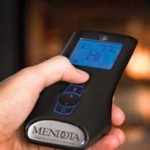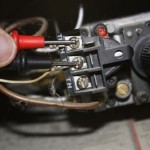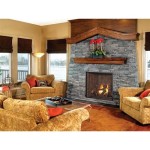Cleaning Stone Fireplace Fronts: A Comprehensive Guide
Stone fireplaces offer a timeless elegance and a focal point for any living space. Their natural textures and earthy tones bring warmth and character to a home. However, the beauty of a stone fireplace can be diminished by soot, dust, and other residues accumulated over time. Regular cleaning is essential to maintain the aesthetic appeal and structural integrity of the stone.
This article provides a comprehensive guide to cleaning stone fireplace fronts, covering various types of stone, necessary tools and materials, step-by-step instructions, and preventative measures. The information presented aims to equip homeowners with the knowledge to effectively and safely clean their stone fireplaces, preserving their beauty and extending their lifespan.
Identifying the Type of Stone
Before commencing any cleaning efforts, it is crucial to accurately identify the type of stone used in the fireplace. Different types of stone possess varying levels of porosity and react differently to cleaning agents. Using the wrong cleaning method can potentially damage the stone's surface, causing discoloration, etching, or even structural weakening.
Common types of stone used for fireplace fronts include:
*Limestone:
A sedimentary rock composed primarily of calcium carbonate. It is relatively soft and porous, making it susceptible to staining and damage from acidic cleaners. *Marble:
A metamorphic rock formed from recrystallized carbonate minerals, most commonly calcite or dolomite. Marble is known for its elegant appearance and smooth surface. It is, however, susceptible to scratching and staining from acidic substances. *Granite:
An igneous rock with a high silica content, making it exceptionally durable and resistant to staining. Granite is a popular choice for fireplaces due to its resilience. *Slate:
A fine-grained metamorphic rock derived from shale. Slate is known for its layered appearance and durability. It is relatively resistant to staining and moisture absorption. *Fieldstone:
A naturally occurring stone found in fields and streams. Fieldstone is often used to create rustic-looking fireplaces. The rock type can vary significantly, so it's important to test cleaning agents in an inconspicuous area first. *Manufactured Stone Veneer:
A lightweight concrete product designed to mimic the appearance of natural stone. While durable, it is porous and requires careful cleaning to avoid damaging the coloring agents.If you are unsure about the type of stone used in your fireplace, consulting with a professional stone mason or contractor is recommended. They can accurately identify the stone and provide tailored cleaning advice.
Gathering Necessary Tools and Materials
Once the type of stone is identified, the appropriate tools and materials can be assembled. Using the right tools can significantly improve the efficiency and effectiveness of the cleaning process while minimizing the risk of damage to the stone.
Essential tools and materials include:
*Soft-bristled brush:
A soft-bristled brush is essential for removing loose dust, soot, and debris from the stone surface. Avoid using brushes with stiff bristles, as they can scratch or damage softer stones like limestone or marble. *Vacuum cleaner with brush attachment:
A vacuum cleaner with a brush attachment is useful for removing loose debris from crevices and hard-to-reach areas. *Buckets:
Two buckets are needed: one for clean water and another for the cleaning solution. *Sponges or cloths:
Use soft, non-abrasive sponges or cloths for wiping down the stone surface. Microfiber cloths are particularly effective at removing dirt and grime. *pH-neutral cleaner:
A pH-neutral cleaner is the safest option for most types of stone. Avoid using acidic cleaners like vinegar or lemon juice, as they can etch or damage delicate stones. Specifically formulated stone cleaners are available and often preferred. *Stone sealant (optional):
After cleaning, applying a stone sealant can help protect the stone from future staining and moisture absorption. Choose a sealant specifically designed for the type of stone used in your fireplace. *Protective gear:
Wear gloves to protect your hands from cleaning solutions. Eye protection is also recommended to prevent any accidental splashes. *Drop cloths or plastic sheeting:
Protect the surrounding floor and furniture by covering them with drop cloths or plastic sheeting. *Spray bottle (optional):
A spray bottle can be helpful for applying the cleaning solution to the stone surface.Step-by-Step Cleaning Instructions
Following a structured approach is crucial for effectively cleaning a stone fireplace front. The following steps outline a general cleaning procedure, but it is always recommended to test the cleaning solution in an inconspicuous area first to ensure it does not damage or discolor the stone.
Step 1: Preparatory Measures
Before commencing the cleaning process, ensure the fireplace is cool to the touch. Remove any loose items from the hearth area, such as decorative objects or firewood. Cover the surrounding floor and furniture with drop cloths or plastic sheeting to protect them from spills and splatters. Wear appropriate protective gear, including gloves and eye protection.
Step 2: Removing Loose Debris
Use a soft-bristled brush to gently remove loose dust, soot, and debris from the stone surface. Pay particular attention to crevices and textured areas where debris may accumulate. Use a vacuum cleaner with a brush attachment to remove any remaining loose particles.
Step 3: Preparing the Cleaning Solution
Mix a pH-neutral cleaner with clean water according to the manufacturer's instructions. The concentration of the cleaning solution may vary depending on the severity of the stains and the type of stone being cleaned. Always start with a diluted solution and gradually increase the concentration if necessary.
Step 4: Applying the Cleaning Solution
Dampen a sponge or cloth with the cleaning solution and gently wipe down the stone surface. Avoid saturating the stone, as excessive moisture can potentially damage it. If using a spray bottle, spray the cleaning solution directly onto the stone surface, ensuring even coverage. Allow the cleaning solution to dwell on the stone surface for a few minutes to loosen dirt and grime.
Step 5: Scrubbing the Stone (If Necessary)
If stubborn stains or grime persist, gently scrub the stone surface with a soft-bristled brush. Avoid using excessive pressure, as this can scratch or damage the stone. For textured surfaces, use a circular motion to effectively clean all the nooks and crannies.
Step 6: Rinsing the Stone
Once the stone has been thoroughly cleaned, rinse it with clean water. Use a clean sponge or cloth dampened with water to remove any remaining cleaning solution. Ensure all traces of the cleaning solution are removed, as residue can attract dirt and cause discoloration over time.
Step 7: Drying the Stone
Allow the stone to air dry completely. Use a clean, dry cloth to wipe down the surface and remove any excess moisture. It is crucial to ensure the stone is thoroughly dry before applying any sealant.
Step 8: Applying Stone Sealant (Optional)
If desired, apply a stone sealant to protect the stone from future staining and moisture absorption. Choose a sealant specifically designed for the type of stone used in your fireplace. Follow the manufacturer's instructions for application and drying time. Applying sealant can provide an additional layer of protection and simplify future cleaning efforts.
Addressing Stubborn Stains
Some stains, such as soot, rust, or efflorescence (a white, powdery deposit caused by mineral salts), may require specialized cleaning techniques. Before attempting any specialized cleaning methods, consult with a professional stone mason or contractor to ensure the method is appropriate for the type of stone in your fireplace.
Here are some common methods for addressing stubborn stains:
*Soot:
A paste made from baking soda and water can be applied to soot stains. Allow the paste to dry completely and then gently brush it away. Repeat as necessary. *Rust:
A commercial rust remover specifically designed for stone can be used to treat rust stains. Follow the manufacturer's instructions carefully. Avoid using harsh chemicals like muriatic acid, as they can damage the stone. *Efflorescence:
Dry brushing or vacuuming can remove light efflorescence. For heavier deposits, a specialized efflorescence cleaner may be required. It is crucial to address the source of the moisture that is causing the efflorescence to prevent it from recurring.Always test any cleaning solution in an inconspicuous area before applying it to the entire surface.
Preventative Measures
Taking preventative measures can significantly reduce the frequency and intensity of cleaning required for a stone fireplace. Implementing the following practices can help maintain the beauty and integrity of the stone over time:
*Regular dusting:
Regularly dusting the stone fireplace front with a soft-bristled brush or vacuum cleaner can prevent the buildup of dust and debris. *Proper ventilation:
Ensure proper ventilation in the room to minimize the accumulation of soot and smoke on the stone surface. *Using a fireplace screen:
A fireplace screen can help prevent sparks and embers from landing on the stone, reducing the risk of staining and damage. *Annual chimney inspection:
Schedule an annual chimney inspection to ensure it is properly maintained and free of obstructions. A properly functioning chimney reduces the amount of soot and smoke that can accumulate on the fireplace front. *Prompt stain removal:
Address any spills or stains promptly to prevent them from setting into the stone. Blot up spills with a clean cloth and clean the affected area with a pH-neutral cleaner.By implementing these preventative measures, homeowners can minimize the need for extensive cleaning and preserve the beauty of their stone fireplaces for years to come.

How To Clean A Stone Fireplace Homeowner S Guide Bob Vila

How To Clean A Neglected Stone Fireplace Georgian Cottage

Stone Fireplace Makeover Part 1 Plans Prep Organized Ish

How To Clean A Fireplace Surround The Impatient Gardener

How To Clean Stone Fireplace Mantels

Ask A Fireplace Expert How To Clean Stone

Stone Fireplace Makeover Part 1 Plans Prep Organized Ish

How To Clean A Limestone Fireplace Stamford Stone At Home

How To Clean A Limestone Fireplace

Stone Fireplace Anyone Know How To Clean This Hometalk
Related Posts








